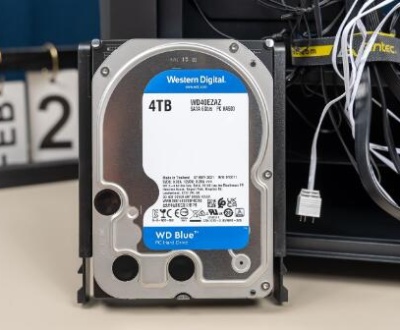Recovering deleted files from a network share folder can be critical for both individuals and organizations. Whether due to accidental deletion, malicious actions, or system failures, lost data can lead to significant disruptions.
1. Network Shares
1.1 What is a Network Share?
A network share is a folder or directory on a network server that allows multiple users to access files over a network. These shared folders can be located on file servers, network-attached storage (NAS) devices, or cloud services.
1.2 Importance of Network Shares
Network shares facilitate collaboration among users in an organization by providing a centralized location for storing and sharing files. This accessibility increases productivity but also raises the risk of accidental deletions and data loss.

2. Common Causes of File Deletion
2.1 Accidental Deletion
Users may accidentally delete files while managing their documents. This is one of the most common reasons for data loss in network environments.
2.2 System Failures
System crashes or network outages can lead to incomplete file transfers, resulting in file loss or corruption.
2.3 Malicious Deletion
Files can also be deleted intentionally by users with malicious intent or through malware attacks that target network shares.
3. Basic Recovery Methods
3.1 Check the Recycle Bin
Before attempting any complex recovery methods, check the Recycle Bin on the network share. If a file is deleted, it may still reside there.
Navigate to the shared folder.
Open the Recycle Bin.
Locate the deleted file, right-click on it, and select “Restore.”
3.2 Restore Previous Versions
Windows offers a feature that allows users to restore previous versions of files and folders from backups.
Right-click on the folder where the file was located.
Select “Properties.”
Go to the “Previous Versions” tab.
Choose a version from before the deletion and click “Restore.”
4. Using Backup Solutions
4.1 File History
If File History is enabled, you can recover previous versions of files stored in network shares.
Go to “Settings” > “Update & Security” > “Backup.”
Select “More options” under “Back up using File History.”
Click on “Restore files from a current backup” and locate your files.
4.2 Shadow Copies
Windows Server includes a feature called Shadow Copies, allowing users to restore previous versions of files.
Right-click the shared folder.
Select “Properties.”
Click on the “Previous Versions” tab to access shadow copies.
5. Third-Party Recovery Software
5.1 Overview of Data Recovery Software
If basic recovery methods do not yield results, consider using specialized data recovery software designed to retrieve lost files from network shares.
5.2 Recommended Software
Panda Assistant is a powerful data recovery software designed to help users retrieve lost or deleted files from various storage devices, including hard drives, USB drives, and SD cards. With its user-friendly interface, Panda Assistant simplifies the recovery process, making it accessible to both novices and experienced users. The software employs advanced algorithms to scan for recoverable files, ensuring a high success rate in restoring data. Whether you’re dealing with accidental deletions, formatting errors, or device malfunctions, Panda Assistant offers a reliable solution for data recovery.
Key features include quick and deep scan options, preview capabilities, and support for multiple file types, enabling users to recover documents, photos, videos, and more. Additionally, Panda Assistant prioritizes data integrity, ensuring that recovered files maintain their original quality. With robust customer support and regular updates, users can trust Panda Assistant to stay effective against evolving data loss scenarios. This makes it an ultimate choice for anyone seeking a reliable and efficient solution for data recovery needs.
6. Advanced Recovery Techniques
6.1 Using Command Prompt
For tech-savvy users, the Command Prompt can sometimes help in recovering lost files.
Open Command Prompt as an administrator.
Use the command: attrib -h -r -s /s /d [Drive Letter]:\*.* to unhide files.
Check if the deleted files are visible.
6.2 Accessing Backup Systems
If your organization uses a centralized backup solution, contact your IT department for assistance in recovering deleted files from backups.
7. Best Practices for Preventing Data Loss
7.1 Regular Backups
Implement a routine backup schedule to prevent data loss. Use both local and cloud-based solutions for redundancy.
7.2 User Permissions
Limit access to sensitive folders by managing user permissions. This can reduce the risk of accidental or malicious deletions.
Recovering deleted files from a network share can be straightforward if proper precautions and methods are in place. By utilizing built-in Windows features, backup solutions, and reliable third-party software, users can successfully recover lost data. Regular backups and appropriate permissions are essential for preventing future data loss.
About us and this blog
Panda Assistant is built on the latest data recovery algorithms, ensuring that no file is too damaged, too lost, or too corrupted to be recovered.
Request a free quote
We believe that data recovery shouldn’t be a daunting task. That’s why we’ve designed Panda Assistant to be as easy to use as it is powerful. With a few clicks, you can initiate a scan, preview recoverable files, and restore your data all within a matter of minutes.
Subscribe to our newsletter!
More from our blog
See all postsRecent Posts
- How to recover deleted voicemail samsung? 2025-04-22
- Samsung portable ssd t5 online recovery 2025-04-22
- Fix western digital external hard drive 2025-04-22

 Try lt Free
Try lt Free Recovery success rate of up to
Recovery success rate of up to









